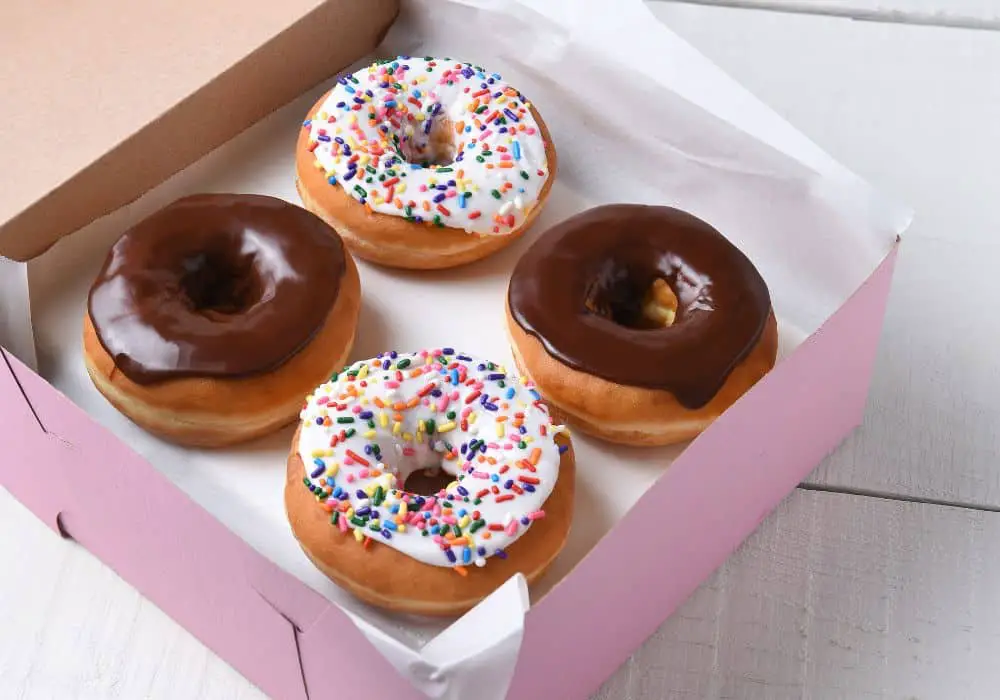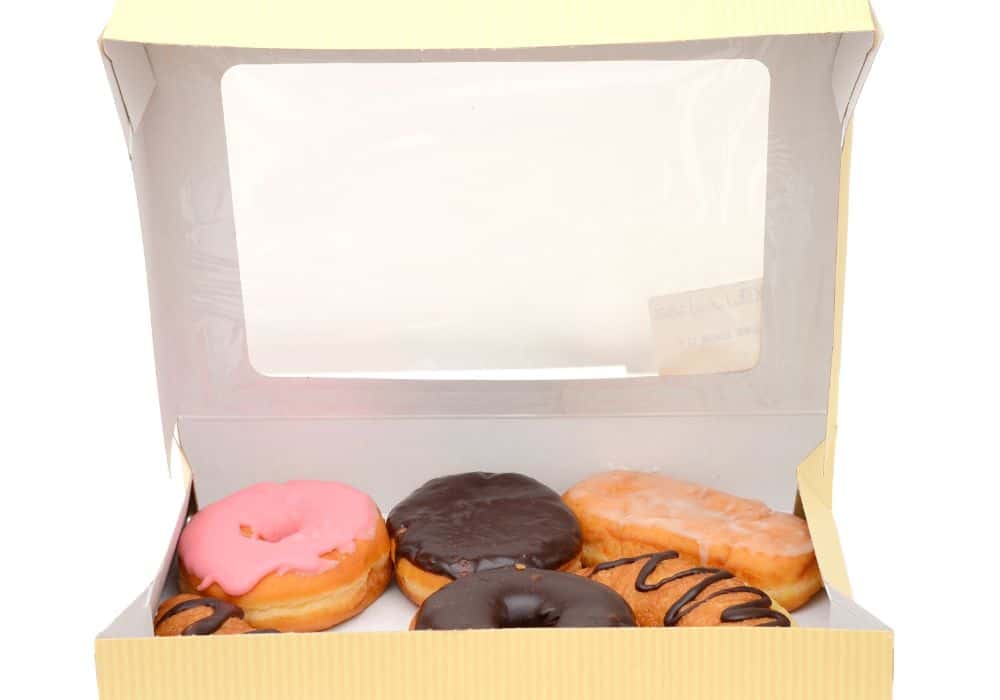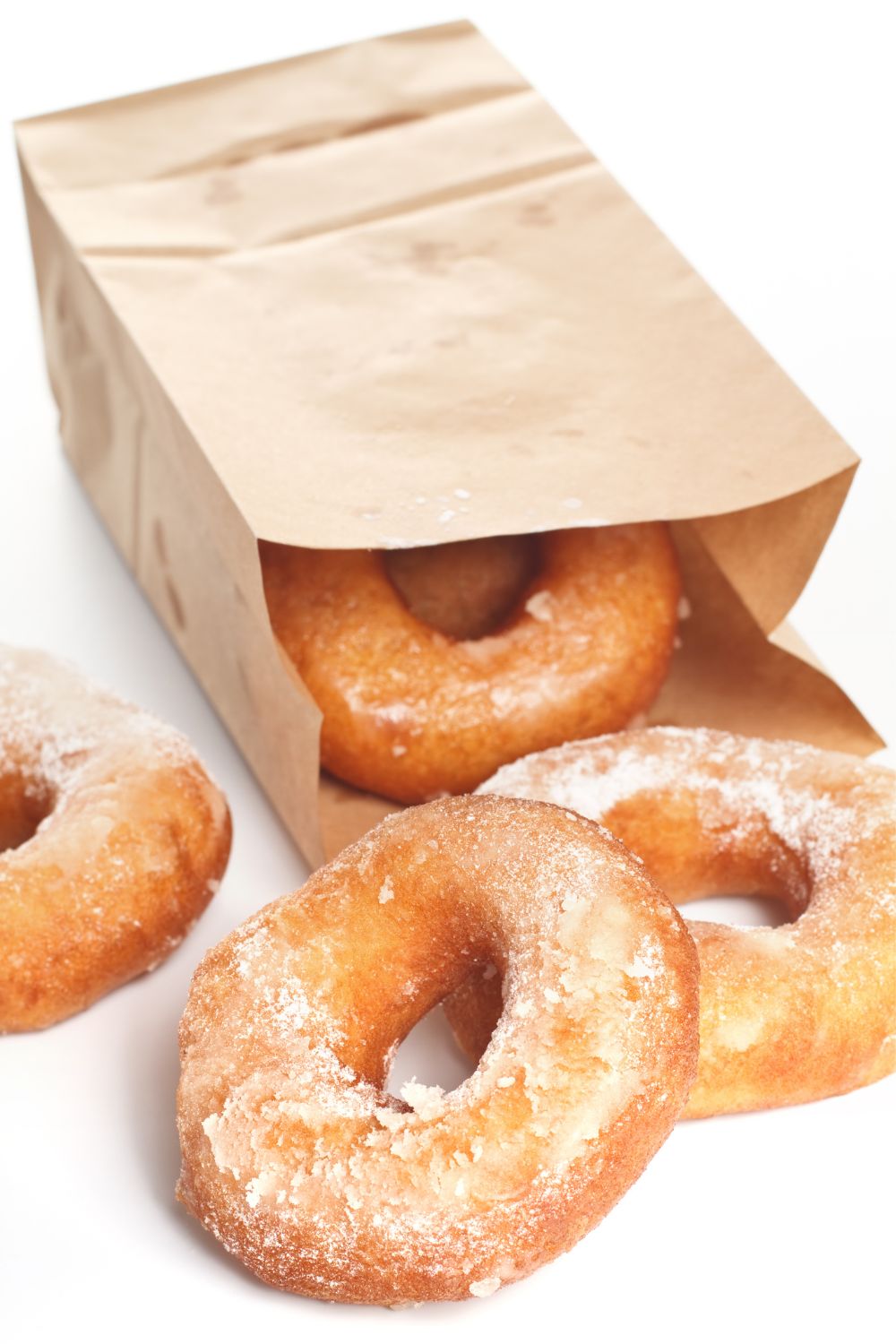Donuts are a delicious pastry that comes in many different flavors and varieties. They are often served in pink boxes, which is a tradition that started in the early 1980s. But what most people don’t think about is that donut packaging comes in many different shapes and sizes.
In this article, we will explore the different types of donut boxes that are available and why they are used. We will also discuss ways to make doughnut packaging more environmentally friendly. So whether you’re a donut lover or just looking for some interesting facts, keep reading!
What is Donut Packaging Made of?

These days there are many different materials that are used to make donut packaging. The materials vary in characteristics, appearance, and cost, each having its own pros and cons. Here are some of the most widely used materials for manufacturing donut packaging:
Cardboard
It’s an umbrella term for materials made of paper pulp (e.g, kraft) and is used by the vast majority of donut shops all around the globe. It’s arguably the material offering the most flexibility in custom packaging designs. From cardboard, you can make nearly any type and style of packaging imaginable, ranging from bags to boxes.
Most cardboard is naturally brown, but it’s very easy to print on and apply various designs, helping to increase the donut shop’s brand awareness.
Cardboard is also relatively cheap, making its use a great business decision, and recyclable, which means it doesn’t hurt our planet that much! However, it has several noticeable drawbacks.
For example, cardboard packaging isn’t that great at protecting the donuts from impact, so if you happen to fall while carrying a cardboard box full of donuts, chances are that it’s not going to end in your favor.
Aluminum Foil Laminated Plastics
That’s one of the rarest options used for manufacturing donut packaging because it’s among the most expensive. Both, aluminum foil and plastics are much more expensive than cardboard, and that’s without including the cost of manufacturing donut packaging itself.
Additionally, while aluminum foil is recyclable, it’s usually just used to cover plastic bags from the inside, and plastic is one of the worst materials from an environmental standpoint.
That being said, aluminum foil laminated plastics are great at keeping the donuts fresh and warm. Finally, it’s one of the best mediums for printing custom labels, allowing donut shops to double down on their branding and marketing.
Corrugated Fiberboard
Corrugated fiberboard is a type of material that’s made of is often used for donut packaging. It is made from a type of cardboard called corrugated case material (CCM). This makes it strong and durable, while still being lightweight.
Corrugated fiberboard is also recyclable, making it a good choice for those who are concerned about the environment. It’s used to manufacture many styles of custom donut box packaging.
The main downside of this type of donut packaging is that it can be more expensive than simpler cardboard options.
Greaseproof Paper
Greaseproof paper is made of paper stock which is processed in a way that makes it non-porous. A low porosity level means that it doesn’t have many nooks and crannies into which liquids, in this case, oils, cannot get in.
Briefly, the greaseproof paper doesn’t soak up the grease off the donut. As you probably already know, these pastries are usually deep fried in oil, making them greasy.
It usually leads to donut grease permeating through most paper-based materials used in packaging, including cardboard and corrugated fiberboard. Because no one wants to handle a greasy box of donuts, greaseproof paper is becoming a popular alternative.
Sometimes its surface is even covered with a silicone or wax coating, further reducing the porosity level and making the paper even more greaseproof. This material is usually used to manufacture donut packaging bags.
As great as it is, greaseproof paper is one of the more expensive materials used for this purpose, and it’s also difficult to recycle because it’s covered in grease.
Types of Donut Packaging

There are many different types and styles of donut packaging, each serving a specific purpose and excelling at a certain situation. Here are some of the most popular types of donut packaging you’re likely to encounter:
Bag Type
This is one of the most widespread types of donut packaging. It’s exactly how it sounds – it’s just a bag into which you pack donuts. Such bags are usually made of greaseproof paper or paperboard, and come in a variety of sizes, sorted by the amount of weight they can hold.
There are also bags with wide openings that are designed to hold a single donut at a time, serving as a napkin and helping you enjoy the donut without greasing up your fingers.
Bags type packaging is convenient, but it doesn’t offer much protection to the donuts, so it’s best used when you aren’t planning on traveling miles with your donuts, and instead eat them soon after purchasing.
Clamshell Style Box
The clamshell style donut packaging is a type of donut packaging that has two halves that snap together, closing the box shut. Such boxes are made of a variety of materials, including polyethylene terephthalate (PET) and polyvinyl chloride (PVC).
The cost of clamshell-style boxes depends on their size and the exact material used, but it’s among the most expensive donut packaging styles.
Most clamshells are designed to fit 6 donuts, but the possibilities are endless, and there are some that fit just a single donut, and others that can carry dozens.
It’s mostly used by grocery stores and less so by bakeries because clamshell boxes are one of, if not the most protective donut packaging types.
Mailer Style Box
This packaging type features a box that is constructed from a single sheet of corrugated fiberboard, without requiring any sort of glue or tape. They hold their structure thanks to an ingenious design featuring interlocking wings.
Mailer-style type packaging opens from above, displaying all the donuts inside. It’s also relatively sturdy compared to its weight. Such characteristics result in mailer-style boxes being used in all sorts of settings, ranging from bakeries to private events.
Sleeve Style Box
This is a unique type of packaging, usually made to store a single donut inside. Unlike nearly every other style of box, sleeve boxes open from the side, by being pulled out from the covering that’s reminiscent of a sleeve.
Sleeve-style boxes are made of various cardboard materials, including paperboard and corrugated case material. They’re also pretty expensive to manufacture and are mostly found in high-end donut shops or private events.
Stick Type
For the last one, we left one of the most novel donut packaging types that are slowly gaining popularity all across the country. It consists of just inserting a stick into the donut, making it easy to enjoy the pastry without touching it with your fingers.
It’s not only hygienic but also saves you from worrying about how you should get rid of donut grease after you’re done eating. Also, who wouldn’t want to eat a donut off a stick? That’s something everyone should try at least once, making it a fun novelty for private events.
Many different materials are used to make such sticks, but the most frequent options include bamboo, which is incredibly cheap, light, and friendly to the environment. As great as they are, sticks aren’t going to change other, more traditional donut packaging types anytime soon.
Why Are So Many Donuts Served in Pink Boxes?
This style of donut box deserves its own section. A pink box is the most renowned, recognizable, and liked donut packaging type by far. Well, that’s only true if you’re from Southern Carolina, as pink boxes are only common in this part of the U.S.
While today most people have at least seen a pink donut box from watching movies, this style of packaging is regional and doesn’t seem to be a common occurrence outside SoCal. So, why does L.A has this weird fixation on pink boxes for packaging donuts?
Well, the story starts in the 1970s, when a man named Ted Ngoy was forced to flee his come country Cambodia due to a ruthless civil war. Upon arriving in California, he worked for years, saving up a budget to start his own business.
Fast forward to the 1980s, Christy’s Donuts is one of the most quickly growing donut businesses in the country, known for packing their delicacies in pink boxes.
You might think it was a genius marketing campaign by Ngoy, but he started using such boxes after not affording the usual white packing boxes used by retailers and fast food restaurants.
Instead, he had to buy much cheaper leftover boxes, that weren’t white, but pink! It not only saved him money but also became synonymous with the great donuts he served.
Such unplanned and nameless branding forced other local donut shops in SoCal to follow suit and also start packing their donuts in pink boxes. And well, the rest is history!
Final Words
The donut packaging world is much larger than it might seem at first glance. It’s full of viable material, type, and style options, and the only limiting factor is the creativity of people packing the donuts.

